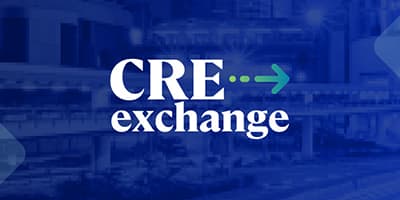CMBS issuance remains strong despite elevated distress
KBRA’s Andrew Foster shares insights into CMBS market activity and key trends in issuance, loan performance, and what you should be preparing for in the year ahead.

Key highlights
Despite tariff uncertainty, CMBS securitizations provided an important source of capital for the CRE market in the first half of 2025
Bond investors have a big appetite for SASB transactions, which are increasing in size, while conduit transactions have shrunk
Another notable shift across the securitization market is a greater willingness to accept exposure to office
Challenges persist with downgrades outpacing upgrades, and still rising delinquencies
The CRE market may be nearing an inflection point where participants are coming to terms with the idea of higher interest rates
KBRA’s Andrew Foster shares insights into CMBS market activity and trends from a rating agency perspective
Altus Group’s CRE Exchange podcast recently hosted KBRA’s Andrew Foster to get a clearer picture of activity and trends within the US CRE securitization and broader CRE debt landscape. Foster holds MSRE and CRE® designations and is Senior Director, Business Development of CMBS at KBRA, a full-service rating agency. Foster and Altus Group’s Omar Eltorai discussed key trends in issuance, loan performance, and what professionals should be preparing for in the year ahead.
With elevated levels of distress and refinancing risk, changes in bond investor appetite, and general uncertainty overshadowing capital markets, the CRE securitization market is anything but static.
Over the last 18 months, the CRE market has been experiencing the benefits of securitization products at a time when banks have lessened appetite for commercial real estate exposure on their balance sheets. “CMBS, when appropriately used, is increasing the supply of liquidity and stability for commercial real estate owners across the country,” says Foster. “It’s a really valuable resource that contributes to the economy, and it can help some of the largest owners in the country.”
Yet CMBS is a market of contradictions. On one side, the market remains active with strong issuance and a healthy appetite from bond investors, while on the other side, delinquencies are rising. Overall, the CMBS market remains resilient. Issuance during the first half of the year was very strong, albeit stronger in the first quarter compared to the second quarter, which slowed due to uncertainty around tariffs.
Single-asset single-borrower (SASB), conduit, and agency securitizations have all been active, and SASB in particular has been very strong. According to Trepp, CMBS issuance during the first half of 2025 reached $59.55B — the biggest first-half total since 2007. SASB accounted for nearly 75% of all issuance. Commercial Real Estate Collateralized Loan Obligation (CRE-CLO) issuance has also grown tremendously. According to Commercial Mortgage Alert, CRE-CLO issuance during the first quarter was the highest in 2.5 years.
CMBS Issuance (billions)
Download
Source: Commercial Mortgage Alert, CREFC Update on CMBS Loan Performance June 2025 report
Investor appetite for SASB deals
Bond investors have a clear appetite for SASB transactions, which are increasing in size, while conduit transactions have shrunk. “That's not to say there haven't been conduit transactions or others that are oversubscribed,” says Foster. Investor appetite has also created a resurgence in the CRE-CLO market. Additionally, there has been a shift in appetite across the securitization market with more willingness to accept exposure to office.
“Clearly on the rating side, there continues to be a situation where downgrades are outpacing upgrades…and loan performance has been a challenge,” says Foster. “That's the market environment that we've been operating in, and it is important context to say how much interest rates have risen over the past couple of years has been quite a test.”
Delinquencies and modifications remain problematic, with distress that is still being worked out.
The delinquency rate among KBRA-rated US private-label CMBS increased to 7.5% in July, while the total delinquent plus current but specially serviced loan rate reached 10.6%.
On the CRE-CLO front in particular, there was a lot of doom and gloom around delinquencies and challenges around many multifamily borrowers who had bought at a price peak. “In hindsight, what you've really had is a lot of those situations play out on the legacy side, with investors being made whole with transactions being collapsed, and investors making out good on those transactions,” says Foster. “So, that's an area where our ratings have been extremely stable, and the product has performed quite well despite a lot of noise and a lot of challenges.”
Collaboration among capital sources
Overall, the CRE market has seen tremendous growth in non-bank lenders, including CMBS, debt funds, mortgage REITs, and other players, and there remains room for non-bank lending to continue to grow market share. What is also interesting is that there has been more “blurring of the lines” between the different sources of capital and collaboration within them, notes Foster.
For example, a private equity lender may be making bridge loans, and when that lender aggregates enough of those loans they tap the securitization market and issue a CRE-CLO. Effectively, private capital is playing a role in the securitization engine. And if a securitization is not the right execution, then the lender might get a warehouse line from a bank or an insurance company.
“To some extent, the amount of deals coming from bank balance sheets, as opposed to private capital, may change the market share dynamics. But there are also banks involved in this new process, and others as well,” says Foster. Some of the insurance companies, mortgage REITs, and private equity groups have found more ways to work together in recent years, and that is likely to be a continued trend as banks take less share of the overall pie for CRE lending, he adds.
Signs of optimism in the near-term outlook
So, what should borrowers and lenders be watching during the second half of 2025 and into 2026? The CRE market has been in a holding pattern for some time, with a slow process of price discovery, higher interest rates, and general uncertainty that is resulting in lower transaction volume. However, a key aspect of the current market is that debt is still accessible.
All eyes are on the Fed and signals on what’s ahead for interest rates. “I do expect that in the coming year the market is going to continue to come to terms with the idea that rates are not necessarily high right now,” says Foster. Potentially, rates could settle out more in line with historical levels that existed prior to the past 10 years of very low rates.
“Obviously, we don't know what's going to happen, but I think market participants' shifting reaction to that reality, should it transpire, will drive a lot of decision making and, ultimately, resolution dynamics for a lot of the challenged loans,” says Foster.
For those looking for signs of optimism in the market, there is a continued underlying theme of resiliency, despite challenges with loan maturities and delinquencies. “In this environment where a lot of financing has gone from a very low coupon to what seems like a very high coupon on a relative basis, most of the property types that make up commercial real estate have been very resilient,” says Foster. “That resiliency, and the fact that it's a diverse market that actually is performing quite well, gives me a lot of optimism.”
Want to be notified of our new and relevant CRE content, articles and events?
Contributors

Andrew Foster
Director of Business Development, CMBS, KBRA

Omar Eltorai
Senior Director of Research, Altus Group

Cole Perry
Associate Director of Research, Altus Group
Contributors

Andrew Foster
Director of Business Development, CMBS, KBRA

Omar Eltorai
Senior Director of Research, Altus Group

Cole Perry
Associate Director of Research, Altus Group
Resources
Latest podcasts






